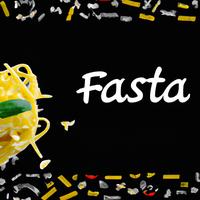
1 serving (56 grams) contains 208 calories, 7.3 grams of protein, 0.8 grams of fat, and 41.8 grams of carbohydrates.

Log this food in SnapCalorie

Nutrition Information
Calories |
831.0 | ||
|---|---|---|---|
% Daily Value* |
|||
| Total Fat | 3.4 g | 4% | |
| Saturated Fat | 0.7 g | 3% | |
| Polyunsaturated Fat | 0 g | ||
| Cholesterol | 0 mg | 0% | |
| Sodium | 13.4 mg | 0% | |
| Total Carbohydrates | 167.3 g | 60% | |
| Dietary Fiber | 7.2 g | 25% | |
| Sugars | 6.0 g | ||
| protein | 29.2 g | 58% | |
| Vitamin D | 0 mcg | 0% | |
| Calcium | 47.0 mg | 3% | |
| Iron | 8.1 mg | 45% | |
| Potassium | 499.5 mg | 10% | |
* Percent Daily Values are based on a 2,000 calorie diet. Your daily values may be higher or lower depending on your calorie needs.
Food Attributes
Source of Calories
About Dried pasta
Dried pasta is a staple of Italian cuisine, made primarily from durum wheat semolina and water. Its firm texture and long shelf life make it a versatile ingredient used in countless dishes worldwide. Rich in carbohydrates, pasta is an excellent source of energy, making it a key component of active diets. It contains small amounts of protein and B vitamins but is low in fat and sodium. Whole-grain varieties offer enhanced nutritional benefits, including higher fiber content for improved digestion. While dried pasta is generally healthy when consumed in moderation, portion control is essential as excess amounts can contribute to weight gain. Its neutral flavor pairs well with diverse sauces, vegetables, and proteins, making it a cornerstone in balanced meals. Easy to prepare and accessible, dried pasta remains a favorite for its simplicity and adaptability to both traditional recipes and innovative culinary creations.



